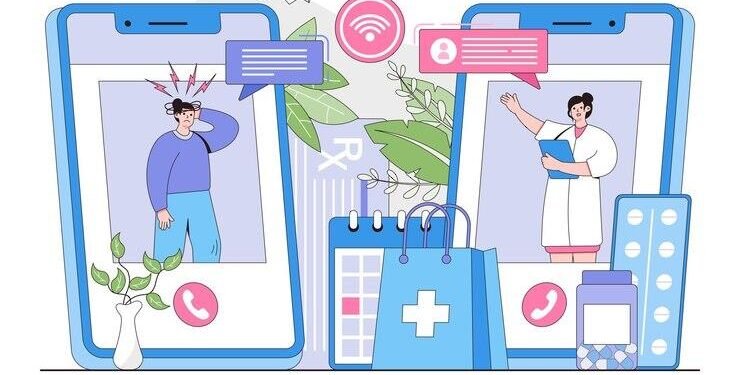Modern telemedicine solutions use the latest technologies to provide more immediate and perfect services. With the advent of this program, patients can receive medical advice from a doctor, make an appointment or monitor the healing process without leaving their homes with a few clicks on their smartphones. In this guide, we will briefly tour the development of a telemedicine program for those who want to start a similar business and have no idea what they will encounter in the process.
Stages of developing a program for telemedicine:
Step 1. Defining the goal and requirements
Before starting the development of telemedicine software, develop and approve a project plan that includes the main goals and ultimate expectations for the program.
Step 2. Search for a partner
It is essential to choose a reliable partner for the project’s high-quality implementation. Consider experience in developing telemedicine applications, quality of work, customer feedback, and compliance with healthcare legislation.
Step 3. UX and UI design
When developing a telemedicine app, defining the main user scenarios is extremely important. These include video scheduling, prescription recording, messaging, patient history, and more. It is also imperative to consider the demands of both healthcare professionals and patients to ensure a consistent and efficient user experience.
A user interface prototype provides a representation of the application interface. This allows you to visualize application scenarios and identify flaws that can be immediately eliminated. Also, let’s not forget about another main aspect—the design of the user interface. Here, attractive elements of the graphical interface can improve the overall display and usability of the program. With the help of these two important factors, it is possible to optimize the program and create a visually attractive and intuitive platform.

Step 4. Features and functions of the program
To create a program for telemedicine, first of all, you should pay attention to the functions. Although ML in healthcare develops quite rapidly, you still need to know what the program will do based on the services you want to provide to the audience. Below is a list that indicates what features are required for a full-fledged telemedicine application:
● Video conferences and chatting
For any telemedicine system, the basis for doctors is communication with patients for diagnosis and consultation. This will simplify the process for patients and doctors, regardless of location.
● Booking and scheduling
The platform should allow you to make appointments and manage appointment schedules.
● Center for medical records
A repository must be created to store the patient’s medical documentation, which must be constantly updated and contain the patient’s medical history.
● Recipe
Doctors should be able to prescribe medicine. This is the best option for helping the patient so that he does not have to search the Internet for all the information about the prescribed medication. Sometimes, the information may need to be updated or untrue, leading to consequences.
● Payment
Paying for a visit or other services online ensures speed and convenience for the patient.
● Notifications
Implement push notifications for text messages or prescription medications. This feature will allow you to see notifications on your phone, which is especially useful for older people.
Step 5. Security
Security is indispensable here, as security plays a vital role in developing telemedicine software. Implement sophisticated security measures during development, including end-to-end encryption for communications, secure user authentication (multi-factor authentication), and data encryption for stored information.
Step 6. Determine the application development method
There are three types of telemedicine program designs to suit your needs:
● Development of a native program
This type of programming provides better functionality, but the code needs to be written separately, which takes more development time and resources.
● Development of cross-platform applications
At this stage, it can write and maintain one code base and run it on different platforms. This saves resources and development time but runs slower than native apps.
● Development of MVP programs
Development according to the MVP method requires small capital and ensures a quick program launch. This development means launching the app with essential features and functions for the initial users.
Step 7. Do thorough testing
Thorough testing is critical to the reliability and functionality of your telemedicine application. Work with an outsourcing partner for full functionality, usability, and security testing. Quickly resolve identified issues to ensure a positive user experience and regulatory compliance.
Step 8. Launch and monitor
After all testing and approvals are complete, you can launch your telemedicine program, monitor its effectiveness, and quickly resolve any issues. Regular updates and maintenance provide a 100% guarantee that your telemedicine software will be reliable and effective.
Conclusion
Telemedicine programs are the future of virtual medical services. Thanks to widespread digitalization, telemedicine is becoming increasingly popular, and doctors’ and patients’ interest in it is growing. Implementing machine learning in healthcare opens up new opportunities for improving diagnosis and treatment. Therefore, the development of telemedicine programs has great potential for success in the near future.












